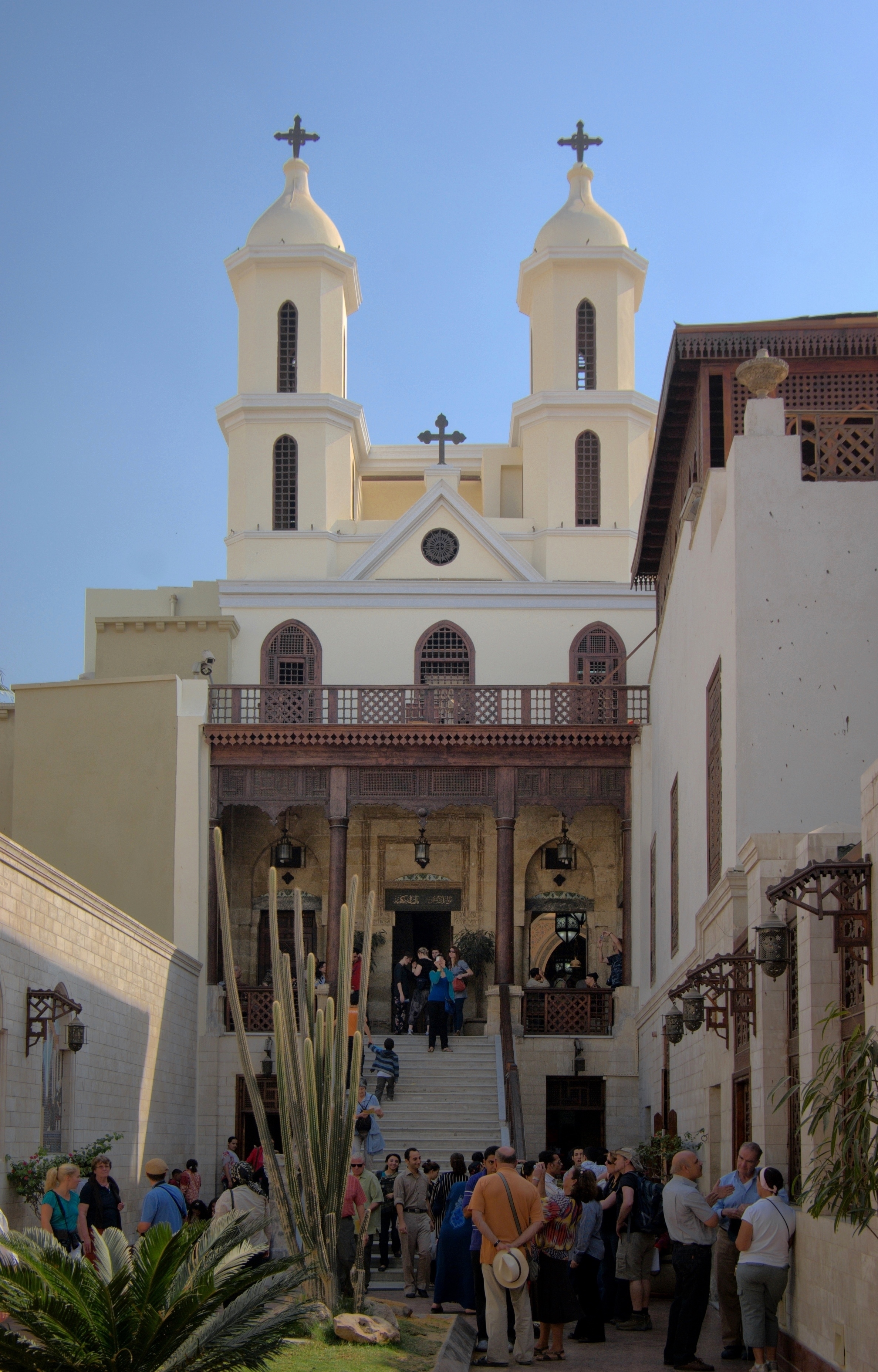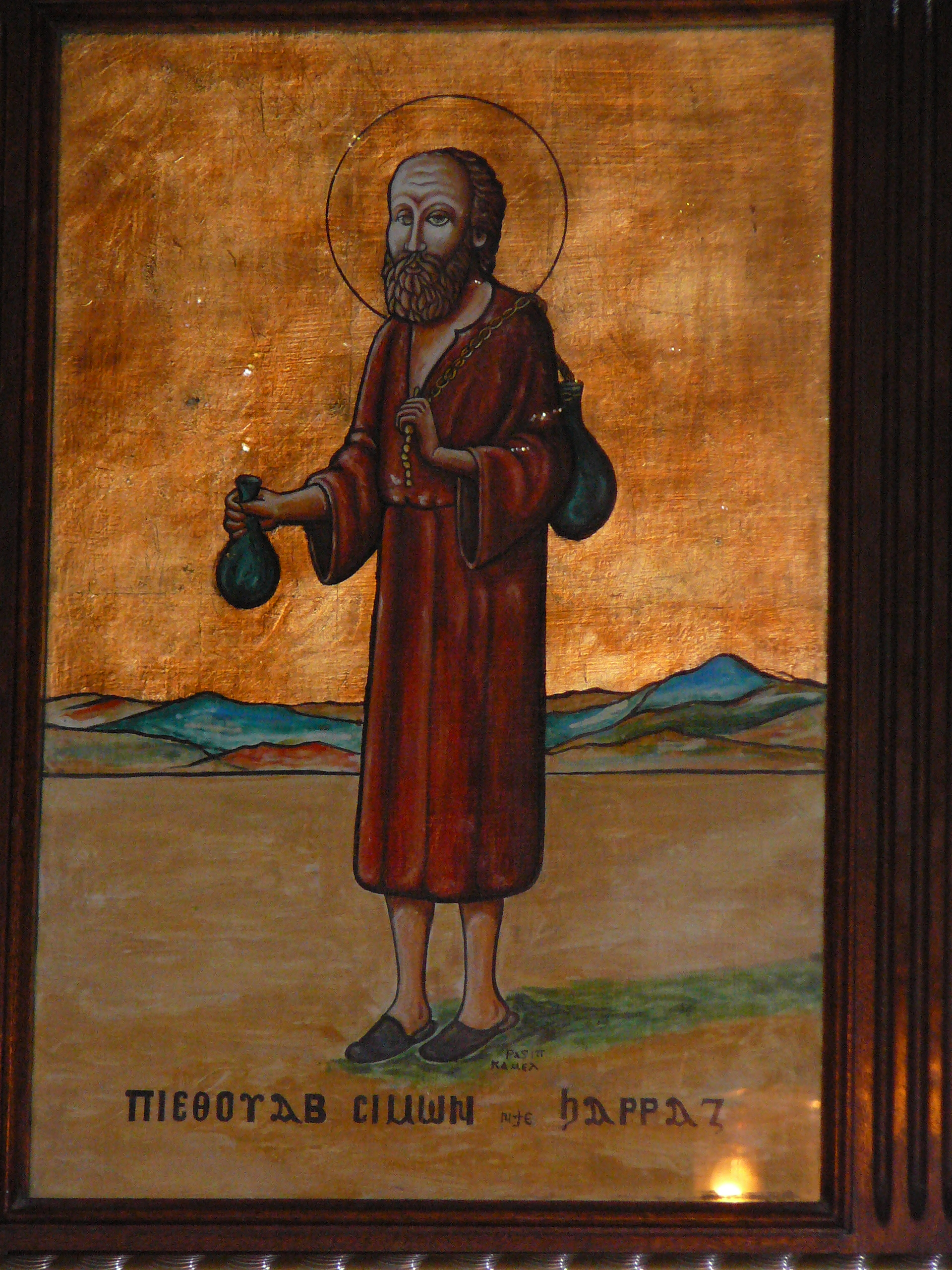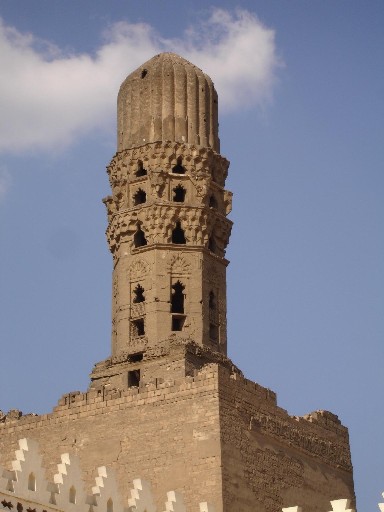|
Pope Zacharias Of Alexandria
Pope Zacharias of Alexandria, was the 64th Pope of Alexandria and Patriarch of the See of St. Mark. He was a native of Alexandria and was an ordained priest there. He was chaste and gentle in disposition. According to Abu al-Makarim, writing in the last quarter of the twelfth century, Zacharias was the last Patriarch of Alexandria to send letters to the rulers of Nubia and Ethiopia, having been forbidden to do so by the Fatimid Caliph Al-Hakim bi-Amr Allah. Nevertheless, if the Caliph or his vizier received a letter from either ruler, it remained the duty of the Patriarch to write a reply.B.T.A. Evetts (translator), ''The Churches and Monasteries of Egypt and Some Neighboring Countries attributed to Abu Salih, the Armenian'', with added notes by Alfred J. Butler (Oxford, 1895), p. 290 Pope Zacharias was buried in Saint Mary Church (Babylon Al-Darag) in Coptic Cairo Coptic Cairo is a part of Old Cairo which encompasses the Babylon Fortress, the Coptic Museum, the Hanging ... [...More Info...] [...Related Items...] OR: [Wikipedia] [Google] [Baidu] |
Pope Of The Coptic Orthodox Church Of Alexandria
The Pope of the Coptic Orthodox Church ( cop, Ⲡⲁⲡⲁ, translit=Papa; ar, البابا, translit=al-Bābā), also known as the Bishop of Alexandria, is the leader of the Coptic Orthodox Church, with ancient Christian roots in Egypt. The current holder of this position is Pope Tawadros II, who was selected as the 118th pope on November 18, 2012. Following the traditions of the church, the pope is chairman and head of the Holy Synod of the Coptic Orthodox Patriarchate of Alexandria. The Holy Synod is the highest authority in the Church of Alexandria, which has between 12 and 18 million members worldwide, 10 to 14 million of whom are in Egypt. The pope is also the chairman of the church's General Congregation Council. Although historically associated with the city of Alexandria, the residence and Seat of the Coptic Orthodox Pope of Alexandria has been located in Cairo since 1047. The pope is currently established in Saint Mark's Coptic Orthodox Cathedral, insi ... [...More Info...] [...Related Items...] OR: [Wikipedia] [Google] [Baidu] |
Abu Al-Makarim
Abu l-Makārim Saʿdullāh ibn Jirjis ibn Masʿūd ( ar, ابو المكارم سعد الله بن جرجس بن مسعود) (d.1208) was a priest of the Coptic Orthodox Church of Alexandria in the thirteenth century. Abu al-Makarim is best known as the author of a famous work entitled ''History of Churches and Monasteries'' ( ar, تاريخ ألكنائس وألأديرة). This was written around 1200. Abu al-Makarim's work is one of the most important sources on the Coptic Church's life during his period and is frequently referenced by scholars of Coptic history. The work first became known in the West when a portion of a manuscript of it was purchased in 1674 in Ottoman Egypt for three piastres by Johann Michael Vansleb Johann Michael Vansleb (1 November 1635 – 1679) was a German theologian, linguist and Egypt traveller. He converted to Catholicism and was a member of the Dominican Order from 1666. ''(Depending on the language of publication, his name is sp .... The ma ... [...More Info...] [...Related Items...] OR: [Wikipedia] [Google] [Baidu] |
Coptic Orthodox Saints
Coptic may refer to: Afro-Asia * Copts, an ethnoreligious group mainly in the area of modern Egypt but also in Sudan and Libya * Coptic language, a Northern Afro-Asiatic language spoken in Egypt until at least the 17th century * Coptic alphabet, the script used for writing the Coptic language, encoded in Unicode as: ** Greek and Coptic (Unicode block), a block of Unicode characters for writing the Coptic language, from which Coptic was disunified in Unicode 4.1 ** Coptic (Unicode block), a block of Unicode characters for writing the Coptic language, introduced in Unicode 4.1 ** Coptic Epact Numbers, a block of Unicode characters for writing Coptic numerals * Coptic Orthodox Church of Alexandria or Coptic Church, the largest Christian church in Egypt and the Middle East * Coptic Catholic Church, an Alexandrian Rite particular Church * Coptic architecture, the architecture of the Copts * Coptic binding or Coptic sewing, methods of bookbinding employed by early Christians in Egypt Oth ... [...More Info...] [...Related Items...] OR: [Wikipedia] [Google] [Baidu] |
List Of Coptic Popes
The following is a list of all of the Coptic Orthodox popes who have led the Coptic Orthodox Church and have succeeded the Apostle Mark the Evangelist in the office of Bishop of Alexandria, who founded the Church in the 1st century, and marked the beginning of Christianity in Africa. The Coptic Orthodox Church is one of the Oriental Orthodox churches (not to be confused with the Byzantine Orthodox group of churches) and is presided over by the Pope and Patriarch of Alexandria who is the body's spiritual leader. This position is held since 2012 by Pope Tawadros II, the 118th Pope of Alexandria and Patriarch of all Africa on the Holy See of St. Mark. The Oriental Orthodox believe that they are the "one, holy, catholic, and apostolic" Church of the ancient Christian creeds. To this date 92 of the Coptic Popes have been glorified, i.e., canonized as saints, in the Coptic Orthodox Church. Title "Pope" The title "pope" (in Greek, ''Papás'') originally was a form of address m ... [...More Info...] [...Related Items...] OR: [Wikipedia] [Google] [Baidu] |
Coptic Cairo
Coptic Cairo is a part of Old Cairo which encompasses the Babylon Fortress, the Coptic Museum, the Hanging Church, the Greek Church of St. George and many other Coptic churches and historical sites. It is believed in Christian tradition that the Holy Family visited this area and stayed at the site of Saints Sergius and Bacchus Church (Abu Serga).Coptic Cairo egyptologyonline Coptic Cairo was a stronghold for both before and during the Islamic era, as most of its churches were built after the |
Saint Mary Church (Babylon Al-Darag)
The Church of the Holy Virgin in Babylon El-Darag (Babylon of the Steps) is a Coptic Orthodox church in Coptic Cairo built in the 11th century AD. History The Church of the Holy Virgin in Babylon El-Darag was occupied from the 11th to the 15th centuries by several Coptic patriarchs, seven of whom were buried in the church. Pope Zacharias was one of them. Pope Cyril VI of Alexandria used to pray in the church before assuming papacy. According to tradition, the church was one of the resting places of the Holy Family during their sojourn in Egypt, as well as the location from which Peter sent his epistle (1 Peter 5:13). The relics of saints Demiana and Simon the Tanner are contained in the church as well. Architecture The ground plan of the church is typical of other Coptic churches: a narthex, a nave, a choir, northern and southern aisles and three sanctuaries. The northern sanctuary is dedicated to the Virgin Mary and the southern sanctuary is used as a shrine. It contains se ... [...More Info...] [...Related Items...] OR: [Wikipedia] [Google] [Baidu] |
Al-Hakim Bi-Amr Allah
Abū ʿAlī Manṣūr (13 August 985 – 13 February 1021), better known by his regnal name al-Ḥākim bi-Amr Allāh ( ar, الحاكم بأمر الله, lit=The Ruler by the Order of God), was the sixth Fatimid caliph and 16th Ismaili imam (996–1021). Al-Hakim is an important figure in a number of Shia Ismaili sects, such as the world's 15 million Nizaris and 1–2 million Musta'lis, in addition to the 2 million Druze of the Levant. (''Which page?'') Histories of al-Hakim can prove controversial, as diverse views of his life and legacy exist. Historian Paul Walker writes: "Ultimately, both views of him, the mad and despotic tyrant (like Germanic and Roman despots) irrationally given to killing those around him on a whim, and the ideal supreme ruler, divinely ordained and chosen, whose every action was just and righteous, were to persist, the one among his enemies and those who rebelled against him, and the other in the hearts of true believers, who, while perhaps p ... [...More Info...] [...Related Items...] OR: [Wikipedia] [Google] [Baidu] |
Fatimid
The Fatimid Caliphate was an Ismaili Shi'a caliphate extant from the tenth to the twelfth centuries AD. Spanning a large area of North Africa, it ranged from the Atlantic Ocean in the west to the Red Sea in the east. The Fatimids, a dynasty of Arab origin, trace their ancestry to Muhammad's daughter Fatima and her husband ‘Ali b. Abi Talib, the first Shi‘a imam. The Fatimids were acknowledged as the rightful imams by different Isma‘ili communities, but also in many other Muslim lands, including Persia and the adjacent regions. Originating during the Abbasid Caliphate, the Fatimids conquered Tunisia and established the city of " al-Mahdiyya" ( ar, المهدية). The Ismaili dynasty ruled territories across the Mediterranean coast of Africa and ultimately made Egypt the center of the caliphate. At its height, the caliphate included – in addition to Egypt – varying areas of the Maghreb, Sudan, Sicily, the Levant, and the Hijaz. Between 902 to 909 the foundat ... [...More Info...] [...Related Items...] OR: [Wikipedia] [Google] [Baidu] |
Ethiopia
Ethiopia, , om, Itiyoophiyaa, so, Itoobiya, ti, ኢትዮጵያ, Ítiyop'iya, aa, Itiyoppiya officially the Federal Democratic Republic of Ethiopia, is a landlocked country in the Horn of Africa. It shares borders with Eritrea to the north, Djibouti to the northeast, Somalia to the east and northeast, Kenya to the south, South Sudan to the west, and Sudan to the northwest. Ethiopia has a total area of . As of 2022, it is home to around 113.5 million inhabitants, making it the 13th-most populous country in the world and the 2nd-most populous in Africa after Nigeria. The national capital and largest city, Addis Ababa, lies several kilometres west of the East African Rift that splits the country into the African and Somali tectonic plates. Anatomically modern humans emerged from modern-day Ethiopia and set out to the Near East and elsewhere in the Middle Paleolithic period. Southwestern Ethiopia has been proposed as a possible homeland of the Afroasiatic langua ... [...More Info...] [...Related Items...] OR: [Wikipedia] [Google] [Baidu] |
Nubia
Nubia () (Nobiin: Nobīn, ) is a region along the Nile river encompassing the area between the first cataract of the Nile (just south of Aswan in southern Egypt) and the confluence of the Blue and White Niles (in Khartoum in central Sudan), or more strictly, Al Dabbah. It was the seat of one of the earliest civilizations of ancient Africa, the Kerma culture, which lasted from around 2500 BC until its conquest by the New Kingdom of Egypt under Pharaoh Thutmose I around 1500 BC, whose heirs ruled most of Nubia for the next 400 years. Nubia was home to several empires, most prominently the Kingdom of Kush, which conquered Egypt in the eighth century BC during the reign of Piye and ruled the country as its 25th Dynasty (to be replaced a century later by the native Egyptian 26th Dynasty). From the 3rd century BC to 3rd century AD, northern Nubia would be invaded and annexed to Egypt, ruled by the Greeks and Romans. This territory would be known in the Greco-Roman world as Dodekasc ... [...More Info...] [...Related Items...] OR: [Wikipedia] [Google] [Baidu] |
List Of Coptic Orthodox Popes Of Alexandria
The following is a list of all of the Coptic Orthodox popes who have led the Coptic Orthodox Church and have succeeded the Apostle Mark the Evangelist in the office of Bishop of Alexandria, who founded the Church in the 1st century, and marked the beginning of Christianity in Africa. The Coptic Orthodox Church is one of the Oriental Orthodox churches (not to be confused with the Byzantine Orthodox group of churches) and is presided over by the Pope and Patriarch of Alexandria who is the body's spiritual leader. This position is held since 2012 by Pope Tawadros II, the 118th Pope of Alexandria and Patriarch of all Africa on the Holy See of St. Mark. The Oriental Orthodox believe that they are the "one, holy, catholic, and apostolic" Church of the ancient Christian creeds. To this date 92 of the Coptic Popes have been glorified, i.e., canonized as saints, in the Coptic Orthodox Church. Title "Pope" The title "pope" (in Greek, ''Papás'') originally was a form of addr ... [...More Info...] [...Related Items...] OR: [Wikipedia] [Google] [Baidu] |
Pope Philotheos Of Alexandria
Pope Philotheos of Alexandria, was the 63rd Pope of Alexandria and Patriarch of the See of St. Mark. It was during his office that a conflict between Alexandria and the King of Axum that began in the time of Cosmas III ended, helped by the efforts of Georgios II of Makuria. Due to Georgios' successful diplomacy, Philotheos ordained a new '' abuna'' or metropolitan bishop In Christian churches with episcopal polity, the rank of metropolitan bishop, or simply metropolitan (alternative obsolete form: metropolite), pertains to the diocesan bishop or archbishop of a metropolis. Originally, the term referred to the ..., Abuna Daniel, for the Ethiopian Orthodox Church after an interregnum of many years.Taddesse Tamrat, ''Church and State in Ethiopia'' (Oxford: Clarendon Press, 1972), pp. 40f References Philetheos 11th-century Coptic Orthodox popes of Alexandria {{OrientalOrthodox-clergy-stub ... [...More Info...] [...Related Items...] OR: [Wikipedia] [Google] [Baidu] |





